Georgios Markou
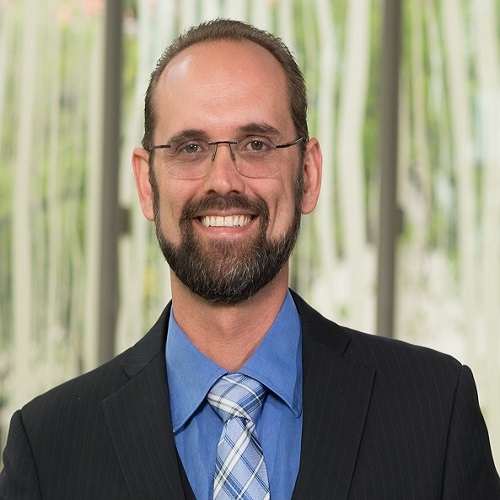
Assistant Professor
Department of Civil Engineering and Geomatics
george.markou@cut.ac.cy
25002944
Dr. George Markou was born in Cyprus in 1979. During his studies at the NTUA[GM1] (1999-2004), he managed to be the recipient of numerous academic awards and scholarships. After he completed his undergraduate studies with honors (2004), he was accepted into the Master of Science 2-year program (NTUA), which he managed to finish in 1 year (2005). In 2005, he was accepted as a Ph.D. candidate (NTUA) under the supervision of Prof. Manolis Papadrakakis[GM2] in the field of computational mechanics. During his Ph.D. dissertation, Dr. Markou was the recipient of 2 scholarships and 1 [...]
Publications
Recent Journal Publications
- Ioannou, A., Galbraith, D., Bakas, N., Markou, G., and Bellos, J., (2025), New Predictive Model for the Computation of Reinforced Concrete Column Shear Strength, Computations, Computers 2025, 14(1), 2; https://doi.org/10.3390/computers14010002
- van der Westhuizen, A., Bakas. N., and Markou, G., (2025), Big data generation and comparative analysis of machine learning models in predicting the fundamental period of steel structures considering soil-structure interaction, International Journal of Computational Methods, 2450057, https://doi.org/10.1142/S0219876224500579
- Hume, P., Grabe, H., and Markou, G., (2024), Using machine learning techniques as track geometry predictors for railway track, SAICE Civil Engineering, Vol. 32(8), pp. 26-32.
- Braun, K.T., Markou, G., Jacobsz, S.W., and Calitz., D. (2024), Developing Predictive Models for the Load-Displacement Response of Laterally Loaded Reinforced Concrete Piles in Stiff Unsaturated Clay Using Machine Learning Algorithms, Structures, Volume 64, June 2024, 106532. https://doi.org/10.1016/j.istruc.2024.106532
- Ababu, E., Markou, G. and Skorpen, S. (2024), Using Machine Learning Algorithms to Develop a Predictive Model for Computing the Maximum Deflection of Horizontally Curved Steel I-Beams, Computation, 2024, 12(8), 151. https://doi.org/10.3390/computation12080151
- Markou, G., and AlHamaydeh, M. (2024), Computationally-efficient high-fidelity nonlinear FEA of seismically isolated post-tensioned RC bridges, Structures 60, 105816. https://doi.org/10.1016/j.istruc.2023.105816
- Markou, G., Bakas, N.P., Chatzichristofis, S.A. and Papadrakakis, M. (2024), General Framework of High-Performance Machine Learning Algorithms: Application in Structural Mechanics, Computational Mechanics, Volume 73, pages 705–729, https://doi.org/10.1007/s00466-023-02386-9
Recent Conference Publications
- Koketso Lucas, Kevin Braun, George Markou, Development of predictive models for computing the strength of sfrc beams through a large dataset, 10th International Conference on Computational Methods in Structural Dynamics and Earthquake Engineering, COMPDYN 2025, 15-18 June 2025, Rhodes Island, Greece.
- Dimitra Gkogkidou, and George Markou, Retrofitting of earthquake-damaged reinforced concrete structures through kan.epe. and 3d detailed modeling, 10th International Conference on Computational Methods in Structural Dynamics and Earthquake Engineering, COMPDYN 2025, 15-18 June 2025, Rhodes Island, Greece.
- Jack Huang, André Broekman, George Markou, and Hua–Peng Chen, Framework for a practical and cost-effective IoT-enhanced structural health monitoring and damage diagnostics system with digital twinning, 10th International Conference on Computational Methods in Structural Dynamics and Earthquake Engineering, COMPDYN 2025, 15-18 June 2025, Rhodes Island, Greece.
- Kevin Braun and George Markou, A parametric investigation of train-test ratios for machine learning algorithms analysing load-displacement behaviour in reinforced concrete piles, 10th International Conference on Computational Methods in Structural Dynamics and Earthquake Engineering, COMPDYN 2025, 15-18 June 2025, Rhodes Island, Greece.
- Duan Calitz, Asma Yahiaoui, George Markou, and Saida Dorbania, Use of HPC in the development of large datasets for the development of predictive models through machine learning algorithms, 10th International Conference on Computational Methods in Structural Dynamics and Earthquake Engineering, COMPDYN 2025, 15-18 June 2025, Rhodes Island, Greece.
- George Markou, Advances in Finite Element Modeling, Machine Learning and SMART Monitoring of Structures, 7th Ganjiang Academic Forum on Civil Engineering, Guangzhou, China, 17-19 May 2024.
- Daniel Rademan and Geroge Markou, A Parametric Investigation of the Train-Test Ratio for Machine Learning Algorithms in Structural Mechanics Applications, ECCOMAS 2024, Portugal, 3-7 June 2024.
- Ernie, Kevin Braun and George Markou, Investigating SFRC Jacketing for Seismic Retrofitting of Reinforced Concrete Multistorey Buildings, ECCOMAS 2024, Portugal, 3-7 June 2024.
- P.C. Hume, P.J. Gräbe, G. Markou, Using Machine Learning Techniques as Track Geometry Predictors for Railway Track, SATC 2024, South Africa.
Books
- Modeling of Reinforced Concrete Structures, LAP Lambert Academic Publishing (2011-09-01), ISBN 10: 3845443251 ISBN 13: 9783845443256
Book Chapters
- Markou, G. Bakas, N. and van der Westhuizen, AM. (2022), “Use of AI and ML Algorithms in developing closed-form formulae, for Structural Engineering Design”, Handbook of Research on Artificial Intelligence and Machine Learning in Civil Engineering, Accepted for publication. DOI: 10.4018/978-1-6684-5643-9.ch004
- Papadrakakis, M., Markou, G. (2022). Assessment of the Structural esponse of Steel Reinforced and Steel-Fibre Reinforced Concrete Structures with 3D Detailed Modeling: Limitations and Remedies. In: Aldakheel, F., Hudobivnik, B., Soleimani, M., Wessels, H., Weißenfels, C., Marino, M. (eds) Current Trends and Open Problems in Computational Mechanics. Springer, Cham. https://doi.org/10.1007/978-3-030-87312-7_38
Local Journals, Newspapers and Others
- Markou, G. (2023), Could Turkey’s Mega-Disaster Have Been Avoided?, OpEd
- Markou, G. (2023), A deeper view in wind turbine structural response through 3D detailed modeling, Advances in Engineering, link: https://advanceseng.com/wind-turbine-structural-response-through-3d-detailed-modeling/
- Markou, G. and Bakas, N.P., (2022), “How the use of Artificial Intelligence and Machine Learning technology is engaged to develop more accurate design formulae for Civil Engineering structures. Current and future research work”, Innovate, University of Pretoria, South Africa.
- Markou, G. and Bakas, N.P., (2021), “Developing reinforced concrete structures through AI algorithms and large-scale modelling”, Innovate, University of Pretoria, South Africa.
- Markou, G. and Bakas, N.P., (2020), “Predicting the behaviour of reinforced concrete structures”, Innovate, University of Pretoria, South Africa.
- Markou, G. and Bakas, N.P., (2019), “Artificial Intelligence (A.I.) Reinforced Concrete. Algorithms predict concrete strength without training on experimental data”, Innovate, University of Pretoria, South Africa.
- H. Ali Bark and Markou, G. (2016), “Modeling, Analysis and Design of Reinforced Concrete Retrofitted Structures”, The 4th United Arab Emirates Undergraduate Research Competition, Abu Dhabi University.
- Markou, G. (Interview Sep 2014), “We must take into account seismic loads during designing”, The Gulf Times, Abu Dhabi, UAE.
- Markou, G. (Interview Sep 2014), “We must take into account seismic loads during designing”, Al-Watan newspaper, Abu Dhabi, UAE, (in Arabic).
- Markou, G., L. Maher, A. Al-Falasi and H. Walid (2012), “Modeling and Design of a High-Rise Reinforced Concrete Structure”, ALHOSN University, Department of Civil Engineering, UAE.
Research
Current Research Interests
Advances in the Civil Engineering scientific field evolved very fast in the last four decades due to the use of numerical methods in an attempt to accurately model and analyze the behavior of our structures. This ability was provided mainly through the use of the Finite Element Method which is considered to be one of the most important discoveries of the 20th century. Furthermore, the development of new materials such as fibre-reinforced polymers, and their use in our structures increased the demand for numerically and experimentally investigating the mechanical behavior of our structures. Therefore, developing new design formulae through the use of state-of-the-art modeling is now a modern reality.
One of the main objectives of the research work performed and presented in the list below aims towards the improvement of our build environment through the development of accurate algorithmic implementations that will provide objective and computationally efficient numerical models in order to develop safer structures and designs. Developing high-performance and accurate algorithms that will provide the ability to study the mechanical behavior of our structures under ultimate limit state conditions, will allow the scientific community to derive answers and propose improved design methodologies for earthquake-resistant structures or structures that use emerging materials. Furthermore, this technology can be used to assess the carrying capacity of existing structures thus providing us with the necessary tools in obtaining numerical results that will be computationally accurate and objective.
Since he was introduced for the first time to the “research world” (Sep. 2003), Dr. Markou managed to get involved in different scientific fields and work with numerous scientists from around the world. The list of his research interests is provided below:
- Modeling of Reinforced Concrete (RC) structures through the use of 3D detailed finite elements.
- Programming and software development of Finite Element Analysis algorithms.
- Artificial Intelligence and Machine Learning in Civil Engineering.
- Health monitoring and damage diagnosis of structures.
- Use of HPC in modeling and machine learning training and testing.
- Mesh generation techniques of embedded rebar elements for the modeling of reinforcement inside reinforced concrete structures.
- Mesh generation techniques of embedded rebar elements for large scale-models.
- Hybrid modeling (HYMOD) of structures.
- Seismic assessment of reinforced concrete bridges through the use 3D detailed modeling and pushover analyses.
- Fiber-reinforced polymer (FRP) modeling through the use of FEM.
- Soil-structure interaction modeling and analysis with 3D detailed FE and HYMOD. Static monotonic, static cyclic, and dynamic analyses.
- Seismic assessment of reinforced concrete bridges through the use of 3D detailed modeling and pushover analyses.
- 3D detailed modeling of A-C-GFRP deep beams.
- Accurate and efficient modeling of the cyclic behavior of RC structures.
- Development of design formulae for FRP-reinforced concrete deep beams through the use of experimental and numerical investigations.
- Mesh decomposition methods and parallel solution algorithmic development.
- Large-Scale Dynamic Analysis of structures through 3D detailed FEM simulations.
- Modeling and design of retrofitted RC structures.
- Dynamic Mesh updating techniques for solving fluid-structure interaction problems.
- Research Goals and Objectives
It is undeniable that our world is heading towards a CAD-based design era that will one day utilize our engineers with the ability to enter the minimum required data within a software, whereas the corresponding software will provide within a few seconds the technical drawings, the environmental report, the cost estimation and the technical specifications that will make the under study structure a high quality product for the consumer. In addition to that, the development of software applications that will be able to assess any type of design that foresees the use of new immersed materials will also be something common in the not-so-far future. Finally, the assessment of the capacity of existing buildings through non-destructive tests and state-of-the-art nonlinear static/dynamic modeling is a research goal that will provide engineers with the ability to propose retrofitting techniques, and technical interventions and form strategies towards developing a safer environment for our society.
Mastering these research challenges is of great importance and forms some of the main research objectives of Dr. Markou’s work. Towards achieving these goals, the development of a strong international research team that will extend and enhance the pre-mentioned research work (M.Sc., PhD students, Post Docs, and Research Assistants) has been the task of the last two years. If you are a dynamic, enthusiastic, and self-motivated individual who loves modeling or programming click here so as to communicate with me directly.
Research Projects
|
Duration, Funding Ag. and Funding |
Title |
Total Funding (€) |
Role and Contribution |
|---|---|---|---|
|
2004 - 2005, (1 Year) Government funding (Greece). |
Analysis of a Fluid Structure Interaction Problem with the Finite Element and Finite Volume Methods |
|
Researcher in Computational Mechanics – Programming – Running Analysis. |
|
2004 – 2005, (1 Year) Greek Aviation Industry |
Fluid-Structure Interaction of a wing |
|
Young Researcher |
|
2008 - 2011, (3 Years) National Technical University of Athens. |
Analysis of Reinforced Concrete Structures with the Finite Element Method |
21,690 |
Young Researcher. Conduct the research project. |
|
2010 - 2011, (1 Year) Interserve Ltd - for MOD UK. |
Seismic assessment of Reema Panel Buildings - Episcopi D- Block Pilot Study and Option Study |
|
Analysis through FEA software. Simulation and modeling consulting. |
|
2012-2018 (6 Years) – Ideas: The European Research Council (ERC) - FP7 |
Mastering the computational challenges in numerical modeling and optimum design of CNT reinforced composites [MASTER] |
2,496,000 |
Supervising the research work package titled Dynamic Analysis of Composite Materials with Dumping |
|
2015-2017, SECRETE, Erasmus Mundus, EU |
Ph.D. Title: Development of Fragility Curves in Cyprus for RC Structures |
36,000 |
Supervisor |
|
2019-2020, RDP, A1B553, University of Pretoria |
Ph.D. Title: Reinforced Concrete Modelling and Design – Developing the state-of-the-art. |
|
Leading Investigator |
|
2021-2022, NRF South Africa |
SMART R-INFRASTRUCTURE |
11,000 |
Leading Investigator |
|
2021-2022, EuroCC (The Cyprus Institute) |
Developing Design Formulae for Reinforced Concrete Structures Through the Use of Large-scale Simulations and AI Algorithms |
20,000 core hours |
Leading Investigator |
|
2022-2023, Production, EuroCC (The Cyprus Institute) |
Development of Fundamental period Formulae through Deep Learning AI for RC and Steel Buildings with and without SSI effects |
400,000 CPU core hours. (300,000 euros) |
Leading Investigator |
|
2023-2024, EuroCC2 (GRNET) |
Development of Predictive Models for the Mechanical Response of Structures through AI and ML Algorithms |
100,000 CPU core hours. (100,000 euros) |
Leading Investigator |
|
2023-2024, EuroHPC (PRACE, European Union, HPC LUMI) |
Development of Large FEA Generated Datasets for the Training of AI and ML Algorithms in Civil Engineering (EHPC-DEV-2023D04-047) |
4,000,000 CPU core hours. (500,000 euros) |
Leading Investigator |
Awards, Honors and Academic Achievements
- Academic Achievers Award 2020, University of Pretoria.
- Highly Commended Paper, Paper Title: A simplified and efficient hybrid finite element model (HYMOD) for non-linear 3D simulation of RC structures, Engineering Computations, Emerald LiteratiNetwork, August 2016.
- Appreciation plaque received from AHU students as a gesture of appreciation for supporting and guiding them as their supervisor during the Wooden Bridge Competition, March 2015.
- Letter of Appreciation from the VC of the ALHOSN University for organizing and supervising the Wooden Bridge Competition team, March 2015.
- ABET accreditation Award 2012, for my contribution as an Assistant Professor in achieving the American Board for Engineering and Technology accreditation of the Civil Engineering Department of the ALHOSN University, Abu Dhabi.
- A three-year scholarship from the J. Argyris foundation to a Ph.D. student for the completion of his dissertation.
- Scholarship from the ELE (Special Research Account – Ειδικός Λογαριασμός Έρευνας) research account department of NTUA to a Ph.D. student.
- Scholarship form the State Scholarship Foundation (I.K.Y. Ίδρυμα Κρατικών Υποτροφιών Ελλάδος), through a special financial support "Mobility and Scholarship Fund" of Greece.
- Award Christou Papakiriakopoulou (in mathematics).
- Award Nicolaou I. Kritikou.
- Award from the TEE (Technical Chamber of Greece) for my academic performance at the National Technical University of Athens, Department of Civil Engineering (1999-2000)
- Award from the TEE (Technical Chamber of Greece) for my academic performance at the National Technical University of Athens, Department of Civil Engineering (2000-2001)
- Award from the TEE (Technical Chamber of Greece) for my academic performance at the National Technical University of Athens, Department of Civil Engineering (2002-2003).
- Award from the State Scholarship Foundation (I.K.Y. Ίδρυμα Κρατικών Υποτροφιών Ελλάδος) to the top three students of each University Department (2000).
- Award from the Thomaidio Foundation for publishing a paper before a year has passed from my bachelors’ degree graduation.
- Five Scholarships from the Cypriot Government Scholarship Foundation for my performance in the Lyceum combined with my record in the Higher Educational Institute (for the years: 1999-2000, 2000-2001, 2001-2002, 2002-2003, 2003-2004).
Professional and academic affiliations
- Research Associate, University of Pretoria, South Africa.
- Technical Chamber of Cyprus, Registered Professional Engineer.
- Engineering Council of South Africa, Registered Professional Engineer.
- Civil Engineering Association of Cyprus (ΣΠΟΛΜΗΚ).
Academic competitions
- Feb. 2013: Creative Emirati exhibition Inaugurating by H.H. Sheikh Nahyan Bin Mubarak Al Nahyan, Minister of Higher Education and Scientific Research. Project’s Title: “Assessment of the design of reinforced concrete bridges in the UAE through the use of state-of-the-art modeling”, Students: Saif and Abdulla Al Mansoori.
- May 2014: Judge of the Competition in Civil Engineering. The 2nd UAE Undergraduate Student Research Competition, ADU Khalifa Campus.
- March 2015: Participation as a supervisor at the Wooden Bridge completion at the American University in Dubai.
- May 2016: Participation as supervisor of Hussein Ali Bark’s research project at the 4th UAE Undergraduate Student Research Competition. This project received the 1st place in the competition.
- Feb. 2020: SAICE show down national competition (undergrad research competition), 3rd price.
- Jul. 2024: SAICE and SATC "Best Young Professional Paper", International Conference.
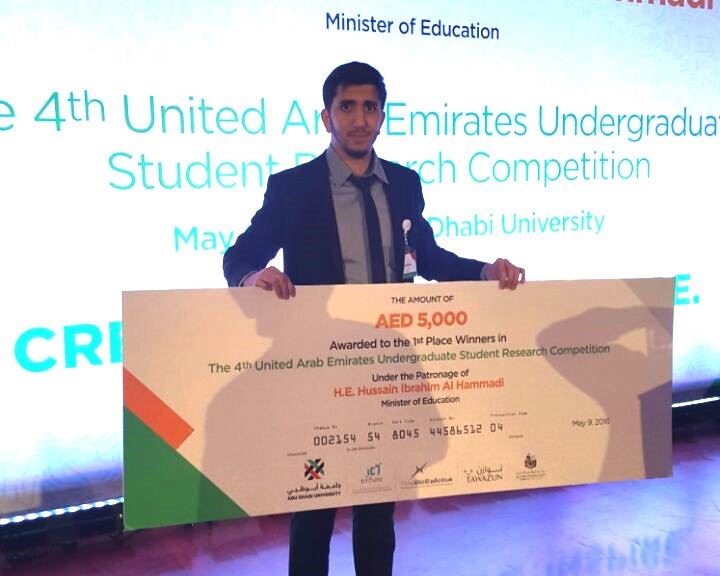
Figure 1. Hussein Ali Bark receiving his 1st place price.
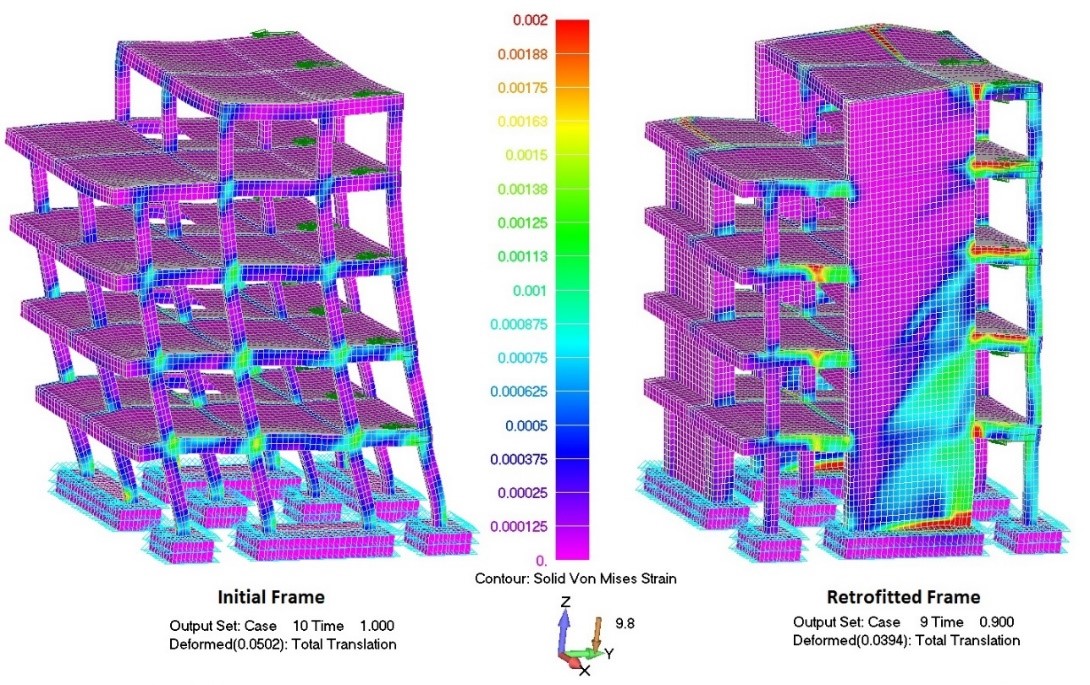
Figure 2. From Mr Hussein’s work, a RC 5-storey models prior to failure. von Mises strain contour of (Left) initial framing system and (Right) retrofitted framing system.
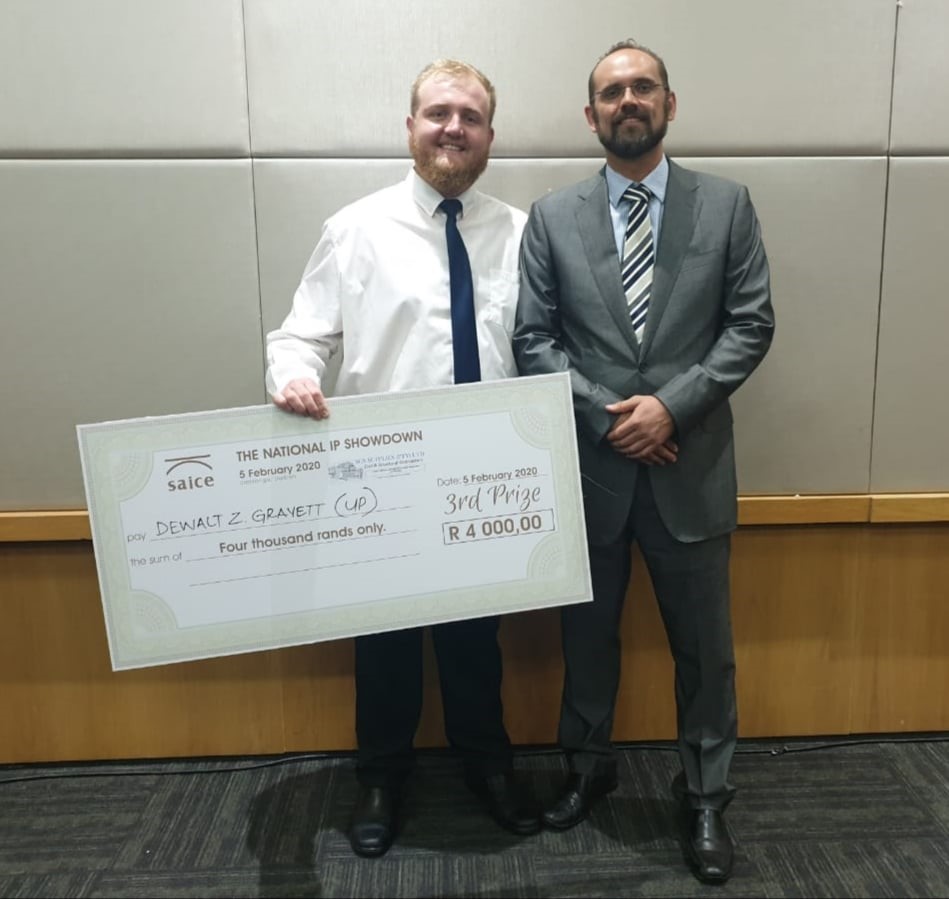
Figure 3. SAICE National Research Competition 2020. Mr. Dewald Gravett and Prof Markou with the Award
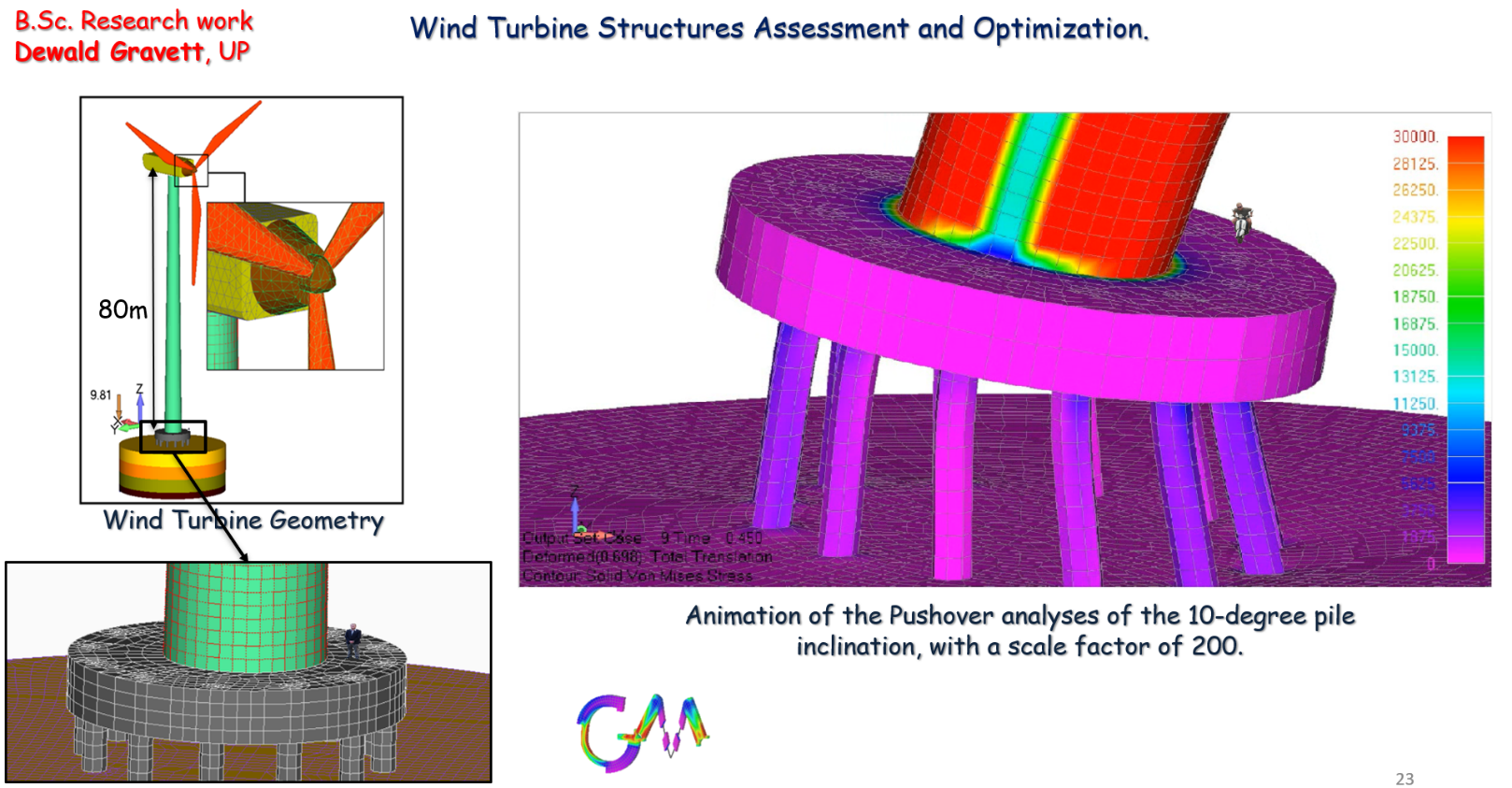
Figure 4. Slide with the finite element mesh of an 80 m tall wind turbine structure. Can you find where Mr. Dewald is located in this figure?
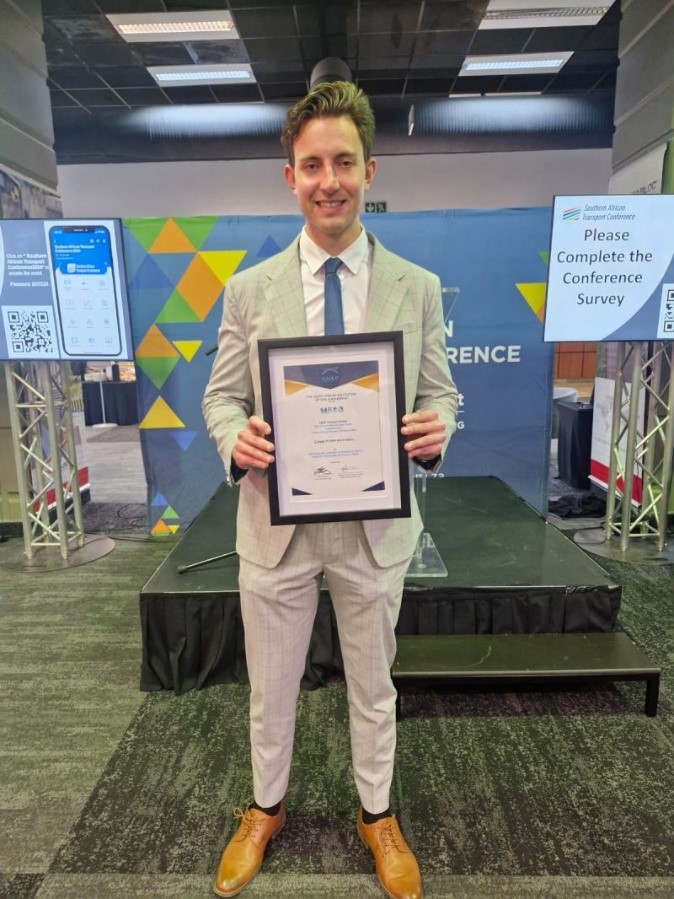
Figure 5. SAICE and SATC "Best Young Professional Paper". Work by: Paul Hume (in photo), Hannes Gräbe, and George Markou, "Using Machine Learning Techniques as Track Geometry Predictors for Railway Track"
Speaking Appearances as Invited Lecturer
- 2010 – SPOLMIK (Civil Engineering Association of Cyprus) and Multisoft.
- Lecture Title: “Eurocodes – Seismic Resistant Reinforced Concrete Structures – Implementation in Computational Mechanics”.
- 2012 (2 seminars) and 2013 (1 seminar) AHU Continuing of Education Center, Abu Dhabi, UAE, Seminar Title: “Modeling and Design of Structures with ETABS”.
- 2014 Apr. – American Corner. State-of-the-Art Modeling of Reinforced Concrete Structures.
- 2014 Sep. – UAE University, Al Ain, UAE. State-of-the-Art Modeling of Reinforced Concrete Structures.
- 2014 Nov. – Abu Dhabi University, UAE. Dynamic Response of Steel and Composite Structures. Modeling and Design.
- 2014 Dec. – American University of Sharjah, UAE. State-of-the-Art Modeling of Reinforced Concrete Structures.
- 2015 Jan. – Abu Dhabi City Municipality, UAE. Lecture on the current trends of modeling RC structures through the use of state-of-the-art FEM.
- 2015 Feb. – American University in Dubai (AUD), UAE. Full-Scale 3D Modeling of Reinforced Concrete Structures.
- Invited speaker at four (4) Universities in Canada:
2015, 21 Sep. – Queens University, Ontario, Canada.
2015, 22 Sep. –University of Western Ontario, Canada.
2015, 23 Sep. – Ryerson University, Ontario Canada.
2015, 24 Sep. – University of Ottawa, Ontario Canada
Seminar Titled: Three Dimensional Modeling of Reinforced Concrete Structures - Current Capabilities and Future Potentials - 2017, 21st July. – University of Sheffield, Sheffield, UK. Seminar Titled: “Seismic Assessment of RC Structures through 3D Detailed Monotonic and Cyclic Simulations. Present Work and Future Challenges.”
- 2018, 6th February. – University of Pretoria, South Africa. Seminar Titled: “3D Detail Modeling in Civil Structures”.
- 2020, 5th November. – The University of Sheffield, Sheffield, UK. Seminar Titled: “Advances in 3D detailed modelling and A.I. applications.”
- 2021, 23rd February – Cyprus University of Technology, Cyprus. Seminar Titled: “Advanced 3D Detailed Modeling and its Use in Developing Predictive Models Through Machine Learning and Artificial Intelligence Algorithms”
- 2023, 9th March – University of Pretoria Campus – International Live Stream Event. Seminar Titled: “Devastating Earthquakes in Turkey, on 6 Feb 2023. What went wrong, and the aftermath.”
- 2023, 24th April – SAICE, South Africa – Live Stream Event.Seminar Titled: “Devastating Earthquakes in Turkey, on 6 Feb 2023. What went wrong, and the aftermath.”
- 2023, 4th May – IStructE, South Africa – Live Stream Event. Seminar Titled: “Devastating Earthquakes in Turkey, on 6 Feb 2023. What went wrong, and the aftermath.”
- 2023, 13th October – XJTLU, China – Live Stream Event. Seminar Titled: “Advances in Finite Element Modeling, High Performance Computing and the Use of Machine Learning Algorithms in Civil Engineering Applications.”
- 2024, 25th March – Tongji University, China – Live stream. Event Seminar Titled: “Advances in Finite Element Modeling and Health Structural Monitoring. High Performance Computing and the Use of Machine Learning Algorithms in Civil Engineering Applications.”
- 2024, 12th November – CIOMP, China. Seminar Titled: “Research in Numerical Modeling, SMART Monitoring, Digital Twining and Machine Learning”
- 2024, 13th November – Jilin University, China. Seminar Titled: “Research in Numerical Modeling, SMART Monitoring, Digital Twining and Machine Learning”
Postdocs, Ph.D., and M.Sc. future candidates
If you are a self-motivated, dynamic, and enthusiastic individual who has a passion for programming and/or modeling structures through the use of numerical methods, and you are looking to work as a researcher under my supervision (M.Sc., Ph.D. or Post-Doc), then send me an email expressing your intentions. Please include your most recent CV and a short cover letter describing your major achievements during your undergrad and/or graduate studies (i.e. publications, technical reports, awards, or any other academic or professional achievements).
I will try to respond to your emails, but do understand that due to my increased professional obligations, there is a chance that I will not always be able to respond on time.
Email: george.markou@cut.ac.cy
